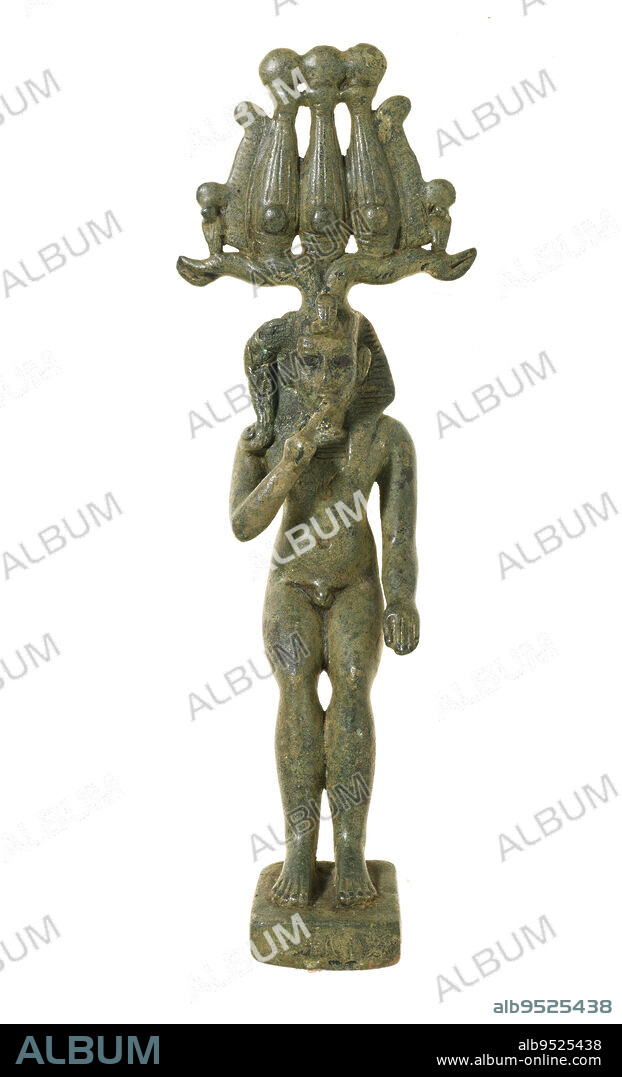alb9525438
God Horus (Harpocrates), 644-30 BCE, 6 1/4 x 2 9/16 in. (15.88 x 6.51 cm), Bronze with green patina, Egypt, 7th-1st century BCE, When the Greeks established dominion over ancient Egypt in 332 BCE, they adopted many of the Egyptian godsand renamed them. Their new name for the god Horus-the-Child was Harpocrates, and this depiction of him dates from that era of Greek rule, called the Hellenistic period. It shows typical markers of childhood, including the gods nudity, the side braid, and a finger in his mouth. As a matter of fact, the position of the hand to the lower lip or chin was the physical representation of the hieroglyph for 'child.'.

|
Ajouter à une autre Lightbox |
|
Ajouter à une autre Lightbox |



Avez-vous déjà un compte? S'identifier
Vous n'avez pas de compte ? S'inscrire
Acheter cette image

Légende:
Voir la traduction automatique
God Horus (Harpocrates), 644-30 BCE, 6 1/4 x 2 9/16 in. (15.88 x 6.51 cm), Bronze with green patina, Egypt, 7th-1st century BCE, When the Greeks established dominion over ancient Egypt in 332 BCE, they adopted many of the Egyptian godsand renamed them. Their new name for the god Horus-the-Child was Harpocrates, and this depiction of him dates from that era of Greek rule, called the Hellenistic period. It shows typical markers of childhood, including the gods nudity, the side braid, and a finger in his mouth. As a matter of fact, the position of the hand to the lower lip or chin was the physical representation of the hieroglyph for 'child.'
Crédit:
Album / quintlox
Autorisations:
Modèle: Non - Propriété: Non
Questions sur les droits?
Questions sur les droits?
Taille de l'image:
3157 x 5198 px | 46.9 MB
Taille d'impression:
26.7 x 44.0 cm | 10.5 x 17.3 in (300 dpi)
Mots clés:
BOUCHE • BRONZE • BRONZES • CORPS MAINS • DATES • DOIGT • DOIGTS • EGYPTE ANCIENNE • EGYPTE • ENFANCE • MAIN • MAINS • MATERIAU BRONZE
 Pinterest
Pinterest Twitter
Twitter Facebook
Facebook Copier le lien
Copier le lien Email
Email
